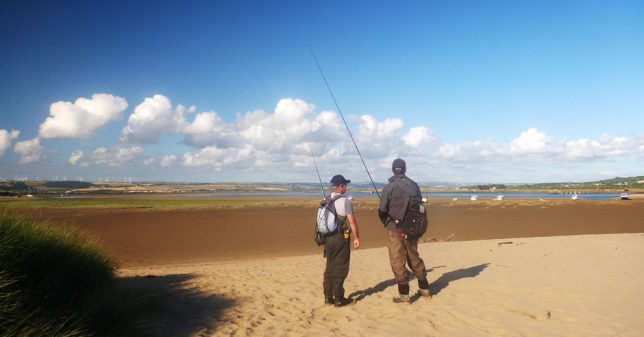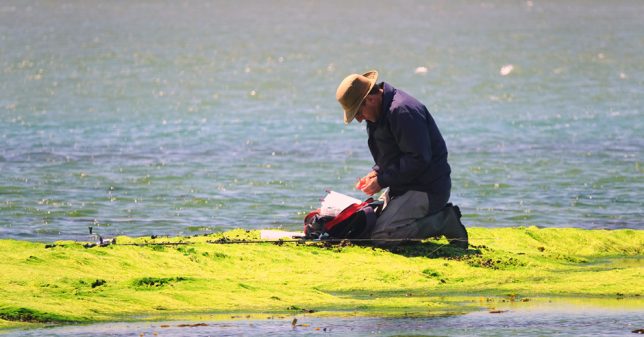Understanding ‘Structure’ And Food Holding Areas
“Every bass angler should have the word ‘structure’ indelibly inscribed onto his mind. Bass are frequently found close to structures because they offer security both to them and their prey”.
The famous and well-liked bass angler, John Darling, used the above form of words in his popular book ‘Bass Fishing on Shore and Sea’ back in the 1990s, and his concept of ‘Structure’ still applies today.

Bass don’t just swim around aimlessly – they hunt for food by probing, chasing, ambushing, or scavenging. By ‘ambushing’ I mean in the same way that a freshwater pike would do, using light, dappled sunlight or shade to help them to ambush their prey.
Therefore, we need to position our bait or lure close to where the bass will be searching for its intended food. So if it’s the time of year for the crab to moult, the bass will be seeking the crabs’ hidey-holes, areas such as at the sides of groynes, around pier foundations, at the muddy/rocky bottoms of harbour walls, around rubbly areas clothed with kelp etc. No doubt they will be encouraged to forage by scents released by the crab during its change of shell.
Bass will also hunt for sand eels where they shoal, because they know where they hide in the sand at night and immerge during daylight. Typical locations are the sandy patches of estuaries or small river outlets, and where freshwater streams or drainage water runs across a sandy beach. Bass will be ‘zoned in’ and have their sights set on a specific sand eel shape and movement when they hunt in areas like this. It will increase your chances of success if you bait up with frozen sand eel or freshly ‘vingled’ eels that have been hooked out of the sand with a bent wire or knife blade. Live sand eels will keep for a surprisingly long time if kept cool, in a bucket of damp sand or wrack and are a bait par excellence.
In many places bass can be localised, with a resident ‘stock’ for a given stretch of rocky coast, natural harbour, or a certain feature (headland, wreck, etc). If you think you have found such a place, keep quiet about it, otherwise it might get be fished-out by others.
In summer, bass will hunt where immature fish and mini-species will feed or take their shelter. So under jetties, around sunken boat wreckage and other clutter can all provide cover for crabs, prawns, worms, butterfish, sand smelt and so on. And cover and food for those juvenile fish and mini-species. in the case of juvenile mackerel, these can shoal or congregate just out from rocky headlands where their own food fish (such as brit) congregate. Where currents collide with structure, bait fish are at a disadvantage, being swept along with the tide and bass will often take advantage by waiting for their prey up-tide of the structure. They have the power and strength to hold station or lunge into the fiercest of tidal flows to intercept their hapless victims.
What have all these places got in common? They are all features, some natural and some man-made. If we go back to John Darling’s concept of Structure and take it a little further, ‘Structure’ could now mean: “Any feature that could hold a source of food for the bass, or a place for bass prey to feed or congregate”

It’s up to the bass angler to work out what type of structure is in front of him / her and to consider what bass food might be present. A recce could be done at low tide, or with a fish-finder if in a boat. It’s then a case of casting or dropping a bait down, which is as close to the natural food that’s likely to be present.
Bass can be caught on a wide variety of baits, lures and flies, but narrowing your offering down to something that the bass is expecting to see and looking to eat, will increase the chances of success many fold.
Author: Geoff Gonella / Steve Pitts
Photos: Steve Pitts
© Bass Anglers’ Sportfishing Society 2008